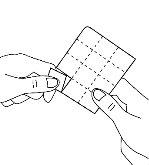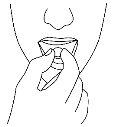
МІРТАЗАПІН ВІАТРІС 15 мг ТАБЛЕТКИ ДЛЯ ПЕРОРАЛЬНОГО РОЗЧИНЕННЯ
Запитайте лікаря про рецепт на МІРТАЗАПІН ВІАТРІС 15 мг ТАБЛЕТКИ ДЛЯ ПЕРОРАЛЬНОГО РОЗЧИНЕННЯ

Інструкція із застосування МІРТАЗАПІН ВІАТРІС 15 мг ТАБЛЕТКИ ДЛЯ ПЕРОРАЛЬНОГО РОЗЧИНЕННЯ
Введення
Опис: інформація для пацієнта
Міртазапін Флас Віатріс 15 мг буко-дисперсивні таблетки EFG
Прочитайте уважно весь опис перед тим, як почати приймати цей лікарський засіб, оскільки він містить важливу інформацію для вас.
- Збережіть цей опис, оскільки вам може знадобитися знову його прочитати.
- Якщо у вас виникли питання, проконсультуйтеся з вашим лікарем або фармацевтом.
- Цей лікарський засіб призначений лише вам, і не слід давати його іншим людям, навіть якщо вони мають相同ні симптоми, оскільки це може їм нашкодити.
- Якщо ви відчуваєте побічні ефекти, проконсультуйтеся з вашим лікарем або фармацевтом, навіть якщо це побічні ефекти, які не вказані в цьому описі. Див. розділ 4.
Зміст опису
- Що таке Міртазапін Флас Віатріс і для чого він використовується
- Що потрібно знати перед тим, як почати приймати Міртазапін Флас Віатріс
- Як приймати Міртазапін Флас Віатріс
- Можливі побічні ефекти
- Збереження Міртазапіна Флас Віатріс
- Зміст упаковки та додаткова інформація
1. Що таке Міртазапін Флас Віатріс і для чого він використовується
Міртазапін Флас Віатріс належить до групи лікарських засобів, званих антідепресантами.
Міртазапін Флас Віатріс використовується для лікування депресії у дорослих людей.
2. Що потрібно знати перед тим, як почати приймати Міртазапін Флас Віатріс
Не приймайтеМіртазапін Флас Віатріс:
- Якщо ви алергічні на миртазапін або на будь-який інший компонент цього лікарського засобу (перелічені в розділі 6).
- Якщо ви приймаєте або приймали нещодавно (останні 2 тижні) лікарські засоби, звані інгібіторами моноамінооксидази (інгібітори МАО).
Попередження та обережність
Не приймайте або проконсультуйтеся з вашим лікарем перед тим, як почати приймати миртазапін:
Якщо ви раніше мали сильну алергічну реакцію, відшарування шкіри, пухирі або виразки у роті після прийому миртазапіну або інших лікарських засобів.
Будьте особливо обережні з миртазапіном:
Відповідно до даних про використання миртазапіну, повідомлялося про важкі шкірні реакції, такі як синдром Стівенса-Джонсона (ССД), токсична епідермальна некроліз (ТЕН) та лікарські реакції з еозінофілією та системними симптомами (ДРЕС). Припиніть використання та зверніться до лікаря негайно, якщо ви помітите будь-які з цих симптомів, описаних у розділі 4 щодо цих важких шкірних реакцій.
Якщо ви раніше мали важкі шкірні реакції, не слід відновлювати лікування миртазапіном.
Діти та підлітки
Міртазапін не слід зазвичай використовувати у лікуванні дітей та підлітків молодше 18 років, оскільки його ефективність не була доведена. Крім того, потрібно знати, що у пацієнтів молодше 18 років існує вищий ризик побічних ефектів, таких як спроби самогубства, самогубчі думки та ворожість (в основному агресія, поведінка конфронтації та роздратування) при прийомі цих лікарських засобів. Незважаючи на це, лікар може призначити миртазапін пацієнтам молодше 18 років, коли вирішить, що це найкраще для пацієнта. Якщо лікар призначив миртазапін пацієнтові молодше 18 років і ви хочете обговорити це рішення, зверніться до лікаря. Ви повинні повідомити лікаря, якщо з'являються або погіршуються будь-які з цих симптомів у пацієнтів молодше 18 років, які приймають миртазапін. Все ще не відомі довгострокові ефекти щодо безпеки, пов'язані з ростом, дозріванням та розвитком пізнання та поведінки миртазапіну в цій віковій групі. Крім того, було спостережено значне збільшення ваги в цій віковій групі з більшою частотою під час лікування миртазапіном у порівнянні з дорослими.
Самогубчі думки та погіршення депресії
Якщо ви депресивні, ви можете іноді мати думки про самознищення або самогубство.
Це може погіршитися, коли ви починаєте приймати антидепресанти вперше, оскільки ці лікарські засоби зазвичай починають діяти через 2 тижні або іноді пізніше.
Ви можете бути більш схильні до таких думок:
- Якщо раніше у вас були самогубчі думки або думки про самознищення.
- Якщо ви молодий дорослий. Дані клінічних досліджень показали збільшений ризик самогубчої поведінки у дорослих молодше 25 років з психіатричними розладами, які приймали антидепресанти.
Якщо у вас з'являються думки про самознищення або самогубство в будь-який момент, зверніться до лікаря або відвезіть до лікарні негайно.
Це може бути корисно сказати близькій особі або другу, що ви депресивні, і попросити його прочитати цей опис. Ви можете попросити його сказати, якщо він вважає, що ваша депресія погіршується, або якщо він турбується про зміни в вашій поведінці.
Проконсультуйтеся з лікарем або фармацевтом перед тим, як приймати миртазапін, якщо ви відчуваєте або раніше відчували будь-які з таких розладів:
- Конвульсії(епілепсія).
- Захворювання печінки, включаючи жовтяницю.
- Захворювання нирок.
- Серцеві захворюванняабо сімейна історія серцевих захворювань, включаючи певні типи серцевих захворювань, які можуть змінити серцевий ритм, недавній інфаркт міокарда, серцеву недостатність або якщо ви приймаєте певні лікарські засоби, які можуть впливати на серцевий ритм.
- Низький артеріальний тиск.
- Шизофренія.
- Біполярний розлад(чергування періодів ейфорії/гіперактивності та періодів депресії).
- Цукровий діабет(можна потрібно коригувати дозу інсуліну або інших антидіабетичних лікарських засобів).
- Очні захворювання, такі як підвищення внутрішньоочного тиску (глаукома).
- Ускладнення з сечовиділенням, які можуть бути пов'язані з збільшенням розміру простати.
Особи похилого віку
- Якщо ви особа похилого віку. Ви можете бути більш чутливими до побічних ефектів антидепресантів.
Під час лікування
Проконсультуйтеся з лікарем:
- Якщо з'являються ознаки інфекції, такі як висока температура, біль у горлі та виразки у роті.
У рідких випадках ці симптоми можуть бути ознаками порушень у виробленні клітин крові в кістковому мозку. Хоча ці симптоми рідкісні, вони можуть з'явитися через 4-6 тижнів лікування.
Інші лікарські засоби та Міртазапін Флас Віатріс
Не приймайте Міртазапін Флас Віатрісразом з:
- Інгібіторами моноамінооксидази(інгібіторами МАО). Також не приймайте миртазапін протягом 2 тижнів після припинення прийому інгібіторів МАО. Якщо ви припиняєте прийом миртазапіну, також не приймайте інгібітори МАО протягом 2 тижнів після цього. Прикладами інгібіторів МАО є моклобемід, транілципромін (обидва є антидепресантами) та селегіліна (для захворювання Паркінсона).
Повідомте лікаря або фармацевта, якщо ви приймаєте, нещодавно приймали або можете приймати будь-який інший лікарський засіб, включаючи ті, які можна придбати без рецепта, особливо будь-який з наступних:
- Антидепресанти, такі як селективні інгібітори зворотного захоплення серотоніну (СІЗЗС)(наприклад, циталопрам), венлафаксин та Л-триптофан або триптани(використовуються для лікування мігрені; наприклад, суматриптан), трамадол(для болю), лінезолід(антибіотик), літій(використовується для лікування деяких психіатричних розладів), метиленовий синій(використовується для лікування токсикозу) та препарати на основі трави Св. Івана(Hypericum perforatum) (фітолікарський засіб для депресії). У дуже рідких випадках миртазапін сам по собі або разом з цими лікарськими засобами може спричинити так званий серотонінергічний синдром. Деякі з ознак цього синдрому включають: гарячку, потіння, палпітацію, діарею, м'язові скорочення (не контрольовані), озноб, надмірні рефлекси, агітацію, зміни настрою та втрату свідомості. Якщо ви спостерігаєте поєднання цих ознак, зверніться до лікаря негайно.
- Лікарські засоби для лікування тривоги або безсоння, такі як бензодіазепіни; наприклад, діазепам або хлордіазепоксид.
- Лікарські засоби для лікування шизофренії, такі як оланзапін.
- Лікарські засоби для лікування алергій, такі як цетирізин.
- Лікарські засоби для лікування сильного болю, такі як морфін.
У поєднанні з цими лікарськими засобами миртазапін може збільшити сонливість, спричинену цими лікарськими засобами.
Ці лікарські засоби збільшують кількість миртазапіну в крові:
- Лікарські засоби для лікування інфекцій:лікарські засоби для лікування бактеріальних інфекцій (наприклад, еритроміцин); лікарські засоби для лікування грибкових інфекцій (наприклад, кетоконазол), лікарські засоби для лікування ВІЛ/СНІДу (наприклад, інгібітори протеази ВІЛ, наприклад, ритонавір, нелфінавір); лікарські засоби для лікування депресії(наприклад, нефазодон) та лікарські засоби для лікування виразок шлунку(наприклад, циметидин). Якщо ви приймаєте ці лікарські засоби разом з миртазапіном, вони можуть збільшити кількість миртазапіну в крові. Повідомте лікаря, якщо ви приймаєте ці лікарські засоби. Можливо, потрібно буде зменшити дозу миртазапіну або збільшити її знову після припинення прийому цих лікарських засобів.
Ці лікарські засоби зменшують кількість миртазапіну в крові:
- Карбамазепін та фенітоїн, лікарські засоби для лікування епілепсії, ріфампіцин, лікарський засіб для лікування туберкульозу. Якщо ви приймаєте ці лікарські засоби разом з миртазапіном, вони можуть зменшити кількість миртазапіну в крові. Повідомте лікаря, якщо ви приймаєте ці лікарські засоби. Можливо, потрібно буде збільшити дозу миртазапіну або зменшити її знову після припинення прийому цих лікарських засобів.
- Варфарин, лікарський засіб для профілактики згортання крові. Міртазапін може збільшити ефекти варфарину в крові. Повідомте лікаря, якщо ви приймаєте цей лікарський засіб. У разі прийому цих лікарських засобів разом рекомендується, щоб лікар проводив контроль над кров'ю.
Прийом Міртазапіна Флас Віатріс з алкоголем
Ви можете відчувати сонливість, якщо п'єте алкоголь під час лікування миртазапіном.
Рекомендується не вживати алкоголь.
Вагітність та лактація
Обмежений досвід застосування миртазапіну у вагітних жінок не вказує на збільшення ризику вроджених дефектів. Однак потрібно бути обережним, якщо використовується під час вагітності.
Якщо ви приймаєте миртазапін і завагітнілі або хочете завагітніти, проконсультуйтеся з лікарем, чи можете продовжувати приймати миртазапін. Якщо ви використовуєте миртазапін до, або недавно перед пологами, ваша дитина буде обстежена на можливі побічні ефекти.
Переконайтеся, що ваша акушерка та/або лікар знають, що ви приймаєте миртазапін.
Лікарські засоби, подібні до СІЗЗС, прийняті під час вагітності, можуть збільшити ризик важкого стану у новонароджених, який називається персистуючою пульмональною гіпертензією новонароджених (ППГН), що робить дихання дитини більш частим і робить її синюшною. Ці симптоми зазвичай починаються впродовж перших 24 годин після народження дитини. Якщо це відбувається, зверніться до акушерки та/або лікаря негайно.
Проконсультуйтеся з лікарем, чи можете годувати грудьми під час прийому миртазапіну.
Якщо ви вагітні або годуєте грудьми, вважаєте, що можете бути вагітною або плануєте завагітніти, проконсультуйтеся з лікарем або фармацевтом перед тим, як використовувати цей лікарський засіб.
Водіння транспортних засобів та використання машин
Міртазапін може впливати на вашу концентрацію або стан неспання. Переконайтеся, що ваші можливості не порушені перед тим, як сідати за кермо транспортного засобу або використовувати машини.
Міртазапін Флас Віатріс містить аспартам
Цей лікарський засіб містить 3 мг аспартаму в кожній буко-дисперсивній таблетці по 15 мг. Аспартам є джерелом фенілаланіну. Він може бути шкідливим, якщо ви страждаєте на фенілкетонурію (ФКУ), рідкісне генетичне захворювання, при якому фенілаланін накопичується, оскільки організм не може його вивести належним чином.
.
3. Як приймати Міртазапін Флас Віатріс
Слідуйте точно інструкціям з прийому цього лікарського засобу, вказаним вашим лікарем або фармацевтом. У разі сумнівів проконсультуйтеся знову з лікарем або фармацевтом.
Як приймати
Рекомендована доза становить 15 або 30 мг на добу.Ваш лікар може порекоменувати збільшити дозу після кількох днів до кількості, яка буде найкращою для вас (між 15 і 45 мг на добу). Рекомендована доза зазвичай така сама для всіх віків. Однак, якщо ви особа похилого віку і страждаєте на захворювання нирок або печінки, ваш лікар може змінити дозу.
Коли приймати
Прийом Міртазапіна Флас Віатріс означає приймати його в одну і ту ж час кожного дня.
Найкраще приймати дозу миртазапіну одразу перед сном. Однак ваш лікар може порекоменувати вам розділити дозу миртазапіну на ранок і вечір перед сном.
Вища доза повинна прийматися перед сном.
Прийом буко-дисперсивної таблетки
Таблетки приймаються перорально.
- Не пресуйте буко-дисперсивну таблетку
Щоб уникнути розчавлювання буко-дисперсивної таблетки, не пресуйте альвеол (Фігура А).

Фігура А.
- Відокремте альвеол
Кожен блистер містить шість альвеол, які відокремлені перфорованими лініями. Відокремте альвеол, слідуючи перфорованим лініям (Фігура 1).

Фігура 1.
- Відкрийте альвеол
Аккуратно видаліть плівку, починаючи з кута (Фігура 2).
Фігура 2.

- Видаліть буко-дисперсивну таблетку
Видаліть буко-дисперсивну таблетку сухими руками і покладіть її на мову (Фігура 3).

Фігура 3.
Він розчиниться швидко і можете його проковтнути без води.
Коли можна очікувати поліпшення
Зазвичай миртазапін починає діяти після 1-2 тижнів, і після 2-4 тижнів ви можете почати відчувати себе краще. Важливо протягом перших тижнів лікування обговорювати з лікарем ефекти миртазапіну:
- Між 2-4 тижнями після початку прийому миртазапіну обговорюйте з лікарем, як цей лікарський засіб вплинув на вас.
Якщо ви ще не відчуваєте себе краще, ваш лікар може призначити вищу дозу. У цьому випадку обговорюйте знову з лікарем після ще 2-4 тижнів.
Зазвичай вам потрібно буде приймати миртазапін, поки симптоми депресії не зникнуть протягом 4-6 місяців.
Використання у дітей та підлітків молодше 18 років:
Міртазапін не слід використовувати у дітей та підлітків молодше 18 років (див. розділ 2 «Діти та підлітки молодше 18 років»).
Якщо ви прийняли більше Міртазапіна Флас Віатріс, ніж потрібно
Якщо ви або хтось інший прийняв надто багато миртазапіну, зверніться до лікаря негайно. Також можете зателефонувати до служби токсикологічної інформації, телефон 91 562 04 20.
Найбільш ймовірні симптоми передозування миртазапіну (без інших лікарських засобів або алкоголю) включають сонливість, дезорієнтацію, зміни серцевого ритму (нерегулярний, швидкий) або обмороки, які можуть бути симптомами потенційно смертельного стану, відомого як торсад де поінт.
Якщо ви забули прийняти Міртазапін Флас Віатріс
Якщо вам потрібно приймати дозу один раз на добу
- Якщо ви забули прийняти дозу миртазапіну, не приймайте забуту дозу. Пропустіть її і приймайте звичайну дозу на наступний день.
Не приймайте подвійну дозу, щоб компенсувати забуті дози.
Якщо вам потрібно приймати дозу двічі на добу
- Якщо ви забули дозу ранку, просто приймайте її разом з дозою вечора.
- Якщо ви забули дозу вечора, не приймайте її наступного ранку; пропустіть її і продовжуйте з нормальними дозами ранку і вечора.
- Якщо ви забули обидві дози, не намагайтеся їх відновити. Пропустіть обидві дози і на наступний день продовжуйте з нормальною дозою ранку і вечора.
Якщо ви припиняєте лікування Міртазапін Флас Віатріс
Припиняйте прийом миртазапіну лише після консультації з лікарем.
Якщо ви припините лікування занадто рано, депресія може повернутися. Коли ви почнете відчувати себе краще, обговорюйте з лікарем. Ваш лікар вирішить, коли ви можете припинити лікування.
Не припиняйте прийом миртазапіну раптово, навіть якщо депресія зникла. Якщо ви припините прийом миртазапіну раптово, ви можете відчувати себе хворим, головокружіння, агітацію або тривогу та мати головний біль. Ці симптоми можна уникнути, припиняючи лікування поступово. Ваш лікар покаже, як поступово зменшувати дозу.
Якщо у вас є будь-які інші питання щодо використання цього лікарського засобу, зверніться до лікаря або фармацевта.
4. Можливі побічні ефекти
Як і всі лікарські засоби, цей лікарський засіб може викликати побічні ефекти, хоча не всі люди їх відчувають.
Якщо ви відчуваєте щось з наступного,перестаньте прийматиміртазапін та повідомте своєму лікареві негайно або зверніться до відділення невідкладної допомоги найближчої лікарні:
Рідкісні(можуть впливати до 1 людини з 1000)
- Запалення підшлункової залози. Це викликає помірний або сильний біль у животі, який поширюється на спину.
Частота невідома(не може бути оцінена на основі наявних даних)
- Епілептичний напад (конвульсії).
- Жовтушність очей або шкіри; може свідчити про порушення функції печінки (жовтяниця).
- Комбінація симптомів, таких як лихоманка, потіння, серцебиття, діарея, м'язові скорочення (неkontrolовані), озноб, надмірна рефлексія, агітація, зміни настрою та втрата свідомості. У дуже рідкісних випадках ці симптоми можуть бути ознаками розладу, званого "серотонінергічний синдром".
- Думки про самогубство або самопошкодження, або спроба самогубства.
- Червоні плями на тулубі, як обмежені або круглі, часто з пухирами в центрі, відшарування шкіри, виразки в роті, горлі, носі, геніталіях та очах. Ці важкі шкірні еритеми можуть передуватися лихоманці та симптомам грипу (синдром Стівенса-Джонсона, токсична епідермальна некроліз).
- Загальне еритематозне висипання, підвищена температура тіла та збільшення розміру лімфатичних вузлів (синдром DRESS або синдром лікарської гіперчутливості).
- Симптоми інфекцій, таких як висока лихоманка, біль у горлі та виразки в роті (агранулоцитоз).
- Міртазапін може викликати порушення виробництва клітин крові (депресія кісткового мозку). Деякі люди стають менш резистентними до інфекцій, оскільки міртазапін може викликати тимчасове зниження кількості білих клітин крові (гранулоцитопенія). У рідкісних випадках міртазапін також може викликати зниження кількості червоних та білих клітин крові та пластинок (апластична анемія), зниження кількості пластинок (тромбоцитопенія) або збільшення кількості білих клітин крові (еозінофілія).
- Розрив м'язової тканини, який викликає м'язовий біль, чутливість, жорсткість або слабкість, та потемніння або забарвлення сечі (рабдоміоліз).
- Ускладнення при сечовипусканні або спорожненні сечового міхура.
- Низький рівень натрію в крові, який може викликати слабкість або запаморочення, супроводжуване м'язовим болем. Це може бути пов'язано з недостатньою секрецією АДГ, гормону, який викликає утримання води в організмі та розрідження крові, що знижує кількість натрію.
Інші можливі побічні ефекти
Дуже часті(можуть впливати на понад 1 особу з 10)
- Збільшення апетиту або збільшення ваги.
- Сонливість.
- Головний біль.
- Сухість у роті.
Часті(можуть впливати до 1 особи з 10)
- Летаргія.
- Головокружіння.
- Тремор.
- Чуття нездужання (нудота).
- Діарея.
- Нездужання (вомітування).
- Запор.
- Кропив'янка або висипання на шкірі (ексантема).
- Болі в суглобах (артралгія) або м'язах (міалгія).
- Біль у спині.
- Головокружіння або непритомність при швидкому встоянні (ортостатична гіпотензія).
- Набухання (зазвичай на щиколотках або ногах) через утримання рідини (едем).
- Втома.
- Яскраві сни.
- Замішання.
- Тревога.
- Ускладнення при сні.
- Проблеми з пам'яттю, які в більшості випадків зникали після припинення лікування.
Нечасті(можуть впливати до 1 особи з 100)
- Чуття ейфорії або емоційного піднесення (манія).
- Чуття незвичайного в шкірі, наприклад, печіння, колючі відчуття, оніміння або поколювання (парестезія).
- Неконтрольовані рухи ніг під час сну.
- Непритомність (синкоп).
- Чуття оніміння в роті (гіпостезія).
- Низький тиск.
- Кошмари.
- Агітація.
- Спостереження, відчуття або чуття речей, які не існують (галюцинації).
- Неможливість залишатися нерухомим.
Рідкісні(можуть впливати до 1 особи з 1000)
- Тики або м'язові скорочення (міоклонус).
- Агресивна поведінка.
- Збільшення рівня печінкових ферментів (встановлено за допомогою аналізу крові).
Частота невідома (не може бути оцінена на основі наявних даних)
- Незвичайні відчуття в роті, наприклад, печіння, свербіння, поколювання або оніміння (оральна парестезія).
- Набухання в роті (едем).
- Низький рівень натрію в крові (гіпонатремія) (встановлено за допомогою аналізу крові).
- Збільшення рівня креатинфосфокінази в крові (встановлено за допомогою аналізу крові).
- Збільшення слинної секреції.
- Сомнамбулізм.
- Ускладнення при мовленні.
- Збільшення рівня пролактину в крові (гіперпролактинемія, яка включає симптоми збільшення грудей або виділення молока з сосків).
- Тривале та болюче ерекційне розширення пеніса.
Інші побічні ефекти у дітей та підлітків
Було спостережено наступні побічні ефекти у дітей молодше 18 років у клінічних дослідженнях: кропив'янка та збільшення рівня тригліцеридів у крові.
Повідомлення про побічні ефекти
Якщо ви відчуваєте будь-який побічний ефект, зверніться до свого лікаря або фармацевта, навіть якщо це можливі побічні ефекти, які не вказані в цій інструкції. Ви також можете повідомити про них безпосередньо через Систему фармакологічного нагляду за лікарськими засобами для людини: https://www.notificaram.es. Надсилаючи повідомлення про побічні ефекти, ви можете допомогти надати більше інформації про безпеку цього лікарського засобу.
5. Зберігання Міртазапіну Флас Віатріс
Тримайте цей лікарський засіб поза досяжністю дітей.
Не використовуйте цей лікарський засіб після закінчення терміну придатності, вказаного на упаковці та блистерній упаковці після CAD або EXP. Термін придатності - останній день місяця, вказаного на упаковці.
Цьому лікарському засобу не потрібні спеціальні умови зберігання.
Лікарські засоби не повинні викидатися у водопровідні труби чи сміття. Відкладайте упаковки та лікарські засоби, які вам не потрібні, у пункт збору фармацевтичного сміття. Якщо у вас є сумніви, запитайте у свого фармацевта, як позбутися упаковок та лікарських засобів, які вам не потрібні. Таким чином, ви допоможете захистити навколишнє середовище .
6. Зміст упаковки та додаткова інформація
Склад Міртазапіну Флас Віатріс
Активний інгредієнт - міртазапін.
Кожен буккальний таблетковий препарат містить 15 мг міртазапіну.
Інші складові частини: кросповідон, манітол (Е-421), мікрокристалічна целюлоза, аспартам (Е-951) (див. розділ 2 "Міртазапін Флас Віатріс містить аспартам"), аромат клубники та гуарани, аромат м'яти, колоїдна кремнеземна діоксид, стеарат магнію.
Вигляд продукту та вміст упаковки
Таблетки Міртазапіну Флас Віатріс білі, круглі та позначені літерою "А" на одному боці та кодом "36" на іншому.
Міртазапін Флас Віатріс випускається у блистерних упаковках, які містять: 6, 12, 18, 30, 48, 60, 90, 96 та 100 буккальних таблеток.
Можливо, не всі розміри упаковок будуть випускатися.
Власник дозволу на торгівлю:
Viatris Limited
Damastown Industrial Park
Mulhuddart, Дублін 15
Дублін
Ірландія
Виробник:
McDermott Laboratories Ltd T/A Gerard Laboratories
35/36 Baldoyle Industrial Estate, Grange Road, Дублін 13
Ірландія
або
Mylan Hungary Kft.
H-2900 Комаром,
Mylan улиця 1,
Угорщина
Ви можете запитати додаткову інформацію про цей лікарський засіб, звернувшись до місцевого представника власника дозволу на торгівлю:
Viatris Pharmaceuticals, S.L.U.
C/ General Aranaz, 86
28027 - Мадрид
Іспанія
Цей лікарський засіб дозволений у країнах-членах Європейського економічного простору та у Великій Британії (Північній Ірландії) під наступними назвами:
Данія Міртазапін Віатріс 15 мг смельттаблеттер
Іспанія Міртазапін Флас Віатріс 15 мг буккальні таблетки ЕФГ
Нідерланди Міртазапін СмелтТаб Віатріс 15 мг, ородисперсійні таблетки
Італія Міртазапін Майлан Дженерікс Італія
Польща Міртаген
Португалія Міртазапін Майлан 15 мг компримідо ородисперсивель
Велика Британія (Північна Ірландія) Міртазапін 15 мг ородисперсійні таблетки
Чехія Міртазапін Віатріс
Дата останнього перегляду цієї інструкції:листопад 2022
Детальна інформація про цей лікарський засіб доступна на сайті Іспанського агентства лікарських засобів та медичних продуктів (AEMPS) https://www.aemps.gob.es/.

Скільки коштує МІРТАЗАПІН ВІАТРІС 15 мг ТАБЛЕТКИ ДЛЯ ПЕРОРАЛЬНОГО РОЗЧИНЕННЯ в Іспанії у 2025 році?
МІРТАЗАПІН ВІАТРІС 15 мг ТАБЛЕТКИ ДЛЯ ПЕРОРАЛЬНОГО РОЗЧИНЕННЯ коштує в середньому 8.52 євро у грудень, 2025 році. Ціна може змінюватися залежно від регіону, аптеки та наявності рецепта. Рекомендуємо перевіряти актуальну вартість у місцевих аптеках або через онлайн-сервіси.
- Країна реєстрації
- Середня ціна в аптеках8.52 EUR
- Діючі речовини
- Потрібен рецептТак
- Виробник
- Інформація є довідковою і не є медичною порадою. Перед прийомом будь-яких препаратів обов'язково проконсультуйтеся з лікарем. Oladoctor не несе відповідальності за медичні рішення, прийняті на основі цього контенту.
- Альтернативи до МІРТАЗАПІН ВІАТРІС 15 мг ТАБЛЕТКИ ДЛЯ ПЕРОРАЛЬНОГО РОЗЧИНЕННЯФорма випуску: ТАБЛЕТКА, 15 мгДіючі речовини: mirtazapineВиробник: Laboratorios Alter S.A.Потрібен рецептФорма випуску: ТАБЛЕТКА, 30 мгДіючі речовини: mirtazapineВиробник: Laboratorios Alter S.A.Потрібен рецептФорма випуску: ТАБЛЕТКА, 15 мгДіючі речовини: mirtazapineВиробник: Almus Farmaceutica S.A.U.Потрібен рецепт
Аналоги МІРТАЗАПІН ВІАТРІС 15 мг ТАБЛЕТКИ ДЛЯ ПЕРОРАЛЬНОГО РОЗЧИНЕННЯ в інших країнах
Найкращі аналоги з тією самою діючою речовиною та терапевтичним ефектом.
Аналог МІРТАЗАПІН ВІАТРІС 15 мг ТАБЛЕТКИ ДЛЯ ПЕРОРАЛЬНОГО РОЗЧИНЕННЯ у Poland
Аналог МІРТАЗАПІН ВІАТРІС 15 мг ТАБЛЕТКИ ДЛЯ ПЕРОРАЛЬНОГО РОЗЧИНЕННЯ у Ukraine
Лікарі онлайн щодо МІРТАЗАПІН ВІАТРІС 15 мг ТАБЛЕТКИ ДЛЯ ПЕРОРАЛЬНОГО РОЗЧИНЕННЯ
Консультація щодо дозування, побічних ефектів, взаємодій, протипоказань та поновлення рецепта на МІРТАЗАПІН ВІАТРІС 15 мг ТАБЛЕТКИ ДЛЯ ПЕРОРАЛЬНОГО РОЗЧИНЕННЯ – за рішенням лікаря та згідно з місцевими правилами.









